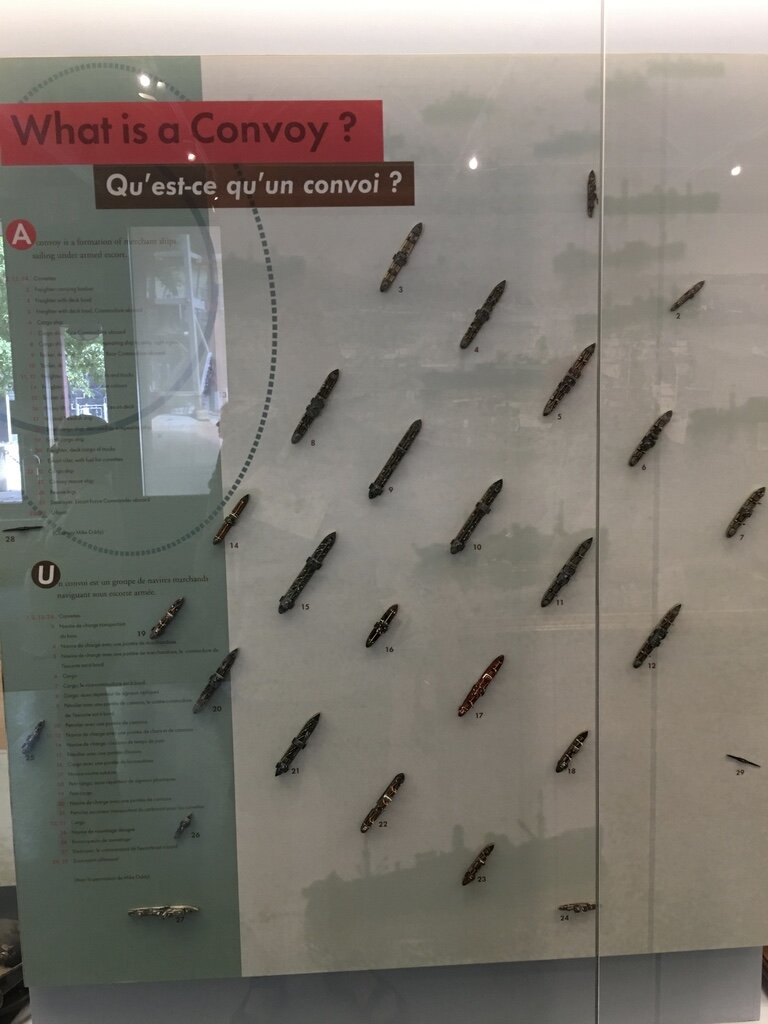Face of the Atlantic at Halifax
Halifax Maritime Museum Part 1
Halifax, famous Harbour in Canada and was once the center of the entire naval force in Canada. However, one question remains: what did this coastal city see in its whole history. What were its uses in the past, the dangers, and issues it had to overcome? Let's answer it today.
Start with the basis
The first section of this Museum is following the evolution of the various ships that were commonly used in the ports through the three Ages of the navy. Those ages are the age of sailing, the age of steam and the Modern days. We are shown models of the actual boats; those include Scooter, Frigate, and Ship of the line.Then comes the boats of the steam ages, and we are shown two boats. One is a steam-sail hybrid, the other one is a full steamboat.The final two models belong to the modern era of the navy. In the middle of all of this, there are two canons; one is an old gunpowder cannon, the other one is a modern light gun. There is also a replica of how Halifax used to look like when it was first built by the British.
The implication in World War II
When Canada entered World War II, Halifax became the center of the help sent to the U.K in their war effort. It was one of the few coastal cities used to launch the convoys. Everything was organized in the greatest secrets to limit the risk that the Germans would find out more about the convoys.The convoys were composed of two types of ships, the cargo ships that made up the majority of them, and a couple of warships, generally corvettes and destroyer. They were extremely vulnerable to German raids as the cargo ships were poorly protected. There were only 5-6 light warships to oppose the numerous heavy battleships used by the Kriegsmarine (German Navy).In addition to this, they were also making great uses of the infamous U-Boats, the very first reliable war submarine. It was deadly effective despite major issues like slow underwater speed and poor armour, as the allies were defenceless at first against such weapons. On top of everything else, the Canadian sailors were poorly trained and equipped.After years of butchering, the allies finally solved this with various innovations. The first and most important one was an entirely new sonar system that allows detecting incoming U-Boats. The other one was the creations of long-range air support in order to offer better protection to the cargo as U-boats were poorly equipped to face them.
Destroyer evolution
There is a subsection within the World War II which covers a little bit the evolution of the destroyers in the navy. At first, they were not really different from the battleships as they were simply a smaller version of it with smaller guns. With time, as missiles technology evolved, Destroyers possessed fewer guns and more missiles.
The Narrow
Following this comes a part of the city that has quite a history. This part is the Narrow, a part of the sea where it is extremely narrow. This place was the home of the Weji-Sqalia'tiek tribe, but Europeans settlers soon took over their lands. After this, we can see how it changed following the evolution of the city (from its uses by cargo ships and train tracks). It is only in World War II that it will face its greatest disaster, the collision between the Imo and the Mont-Blanc.
The Great Explosion
At first, this doesn't sound right: two ships colliding with one another and one catching on fire and burning. This scenario is actually extremely common in such a narrow passage. What was less common is that the Mont-Blanc was completely filled with gunpowder and gasoline meant for the War effort in Europe. The fire caused by the Imo turned this cargo into a mini nuke, right in the middle of the city.The impacts of the explosion were catastrophic, it completely devastated Halifax, killing thousands of people. Help took weeks to arrive because the explosion smashed the train track (which went along the Narrow). The telephone lines and roads suffered the same fate for the same reasons. In other words, the city was totally isolated from the rest of the country. The fate of the crew of theImo is not known, unfortunately, it is thought that they all perished in the explosion. On the other hand, the crew of the MONT-Blanc is well known. As soon after the fire started, the crew abandoned the ship and took cover on land. By doing so they left the ship alone going straight to the city at full speed. This action also lead the captain to be held responsible or the disaster, since he too abandoned the ship.
Vessels and sable island
The last room on the first floor has two interests, the first one is a collection of small vessels. They all vary in size and style. The second part is about a particular area that is at the outside of the port of Halifax not far in the ocean. This place is Sable Island, a small island principally made of sands, and a death trap for ships. Dozens of ships saw their end in this tricky area because it is made to catch ships, between the strong currents, fog, and small sea level elevations. On top of all this, it is located right in the middle of the trade paths of the vessells living and going to Halifax. Today many installations were put on the place for future incidents so survivors can call for help. The second floor will be presented in my next post because the place is just too big to be cover in one post!












